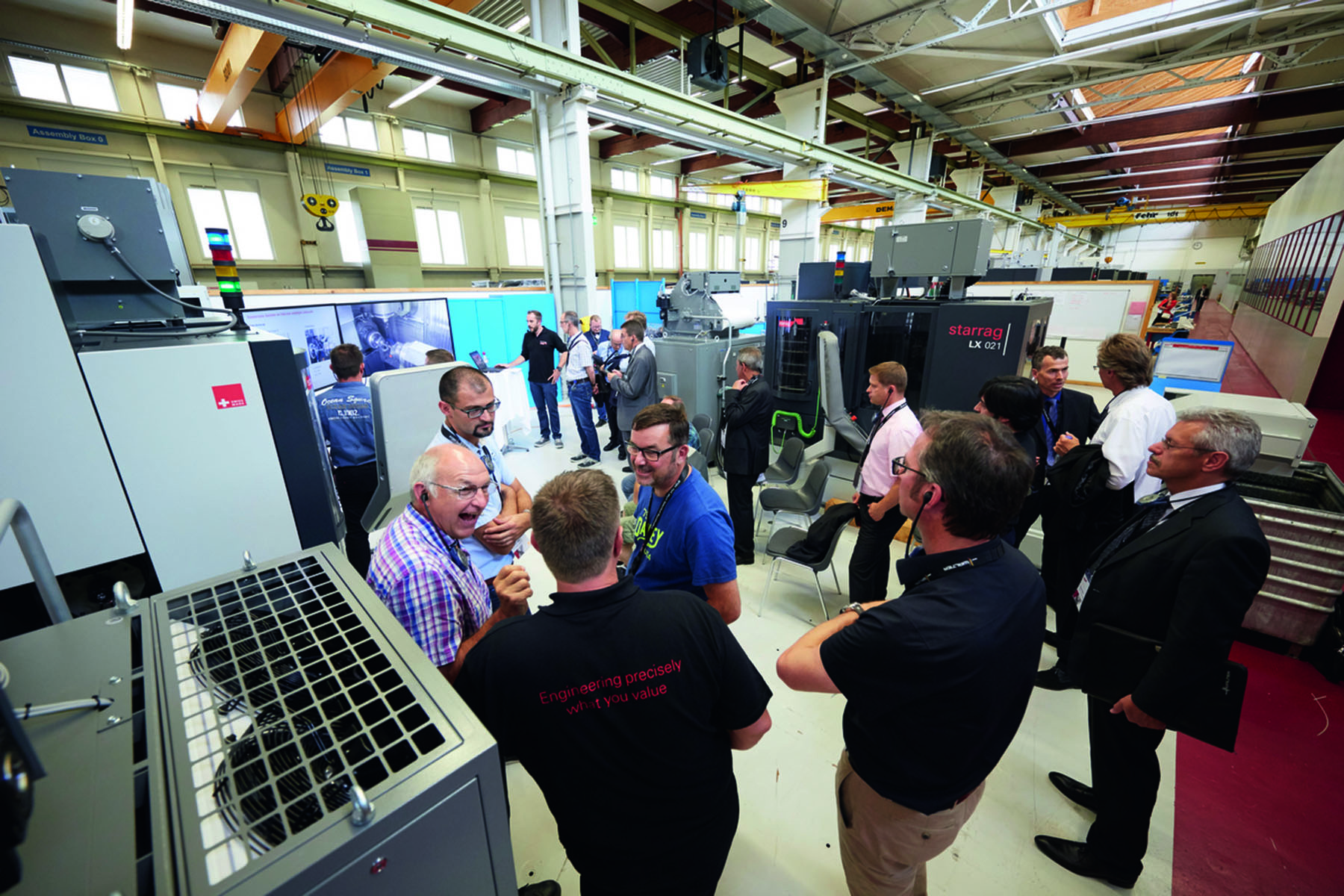
Walter teamed up with machine builder Starrag AG, Rorschacherberg, Switzerland, to take a step into the future. The venue was the fifth annual "Turbine Technology Days." Held at Starrag headquarters in Rorschacherberg, the event attracted over 200 visitors from 19 countries. It focused specifically on ways to make turbine production even more productive and reliable, and beyond that on developments in machining and control technology that are changing both turbine production and manufacturing in general.
Turbine production is attracting considerable attention lately, in part because the aviation industry is experiencing a boom, and the power generation sector is also experiencing increasing demand for gas turbines. The consequences: OEMs and suppliers must increase their production while machine builders are being called on to meet higher quality criteria, all while facing increased competition because of globalization.
For Walter and Starrag, the aerospace and energy sectors are strategic business areas in which they are developing application-specific solutions in partnership with their customers.
Mirko Merlo, CEO of Walter AG, emphasized the importance of digitalization: "Digital solutions are the future of modern machining. It is no longer just about turning, milling, drilling and threading. Perfection and precision are basic requirements. Walter presented solutions that are more than just tools. Tailored and efficient processes are important prerequisites for this."
For Starrag CEO, Walter Börsch, this application-specific approach is the key to making leaps in productivity, which subsequently improve competitiveness: "We have extensive process expertise, which includes machine, tool and device technology, as well as software and control technology. This allows us to not only offer machines but also complete production systems that are precisely tailored to meet the customers' requirements and guarantee maximum benefits."
Working together, Starrag and Walter designed 14 stations that used practical examples to illustrate these opportunities. In addition to machining examples, Starrag and Walter also demonstrated the diverse potential improvements that can be gained through digitalization and modern software.
The event was joined by nine competence partners whose products – from cooling lubricant, testing and measuring technology and tooling systems, through to software solutions – play a significant role in the process chain.
Related Glossary Terms
- gang cutting ( milling)
gang cutting ( milling)
Machining with several cutters mounted on a single arbor, generally for simultaneous cutting.
- milling
milling
Machining operation in which metal or other material is removed by applying power to a rotating cutter. In vertical milling, the cutting tool is mounted vertically on the spindle. In horizontal milling, the cutting tool is mounted horizontally, either directly on the spindle or on an arbor. Horizontal milling is further broken down into conventional milling, where the cutter rotates opposite the direction of feed, or “up” into the workpiece; and climb milling, where the cutter rotates in the direction of feed, or “down” into the workpiece. Milling operations include plane or surface milling, endmilling, facemilling, angle milling, form milling and profiling.
- threading
threading
Process of both external (e.g., thread milling) and internal (e.g., tapping, thread milling) cutting, turning and rolling of threads into particular material. Standardized specifications are available to determine the desired results of the threading process. Numerous thread-series designations are written for specific applications. Threading often is performed on a lathe. Specifications such as thread height are critical in determining the strength of the threads. The material used is taken into consideration in determining the expected results of any particular application for that threaded piece. In external threading, a calculated depth is required as well as a particular angle to the cut. To perform internal threading, the exact diameter to bore the hole is critical before threading. The threads are distinguished from one another by the amount of tolerance and/or allowance that is specified. See turning.
- turning
turning
Workpiece is held in a chuck, mounted on a face plate or secured between centers and rotated while a cutting tool, normally a single-point tool, is fed into it along its periphery or across its end or face. Takes the form of straight turning (cutting along the periphery of the workpiece); taper turning (creating a taper); step turning (turning different-size diameters on the same work); chamfering (beveling an edge or shoulder); facing (cutting on an end); turning threads (usually external but can be internal); roughing (high-volume metal removal); and finishing (final light cuts). Performed on lathes, turning centers, chucking machines, automatic screw machines and similar machines.
